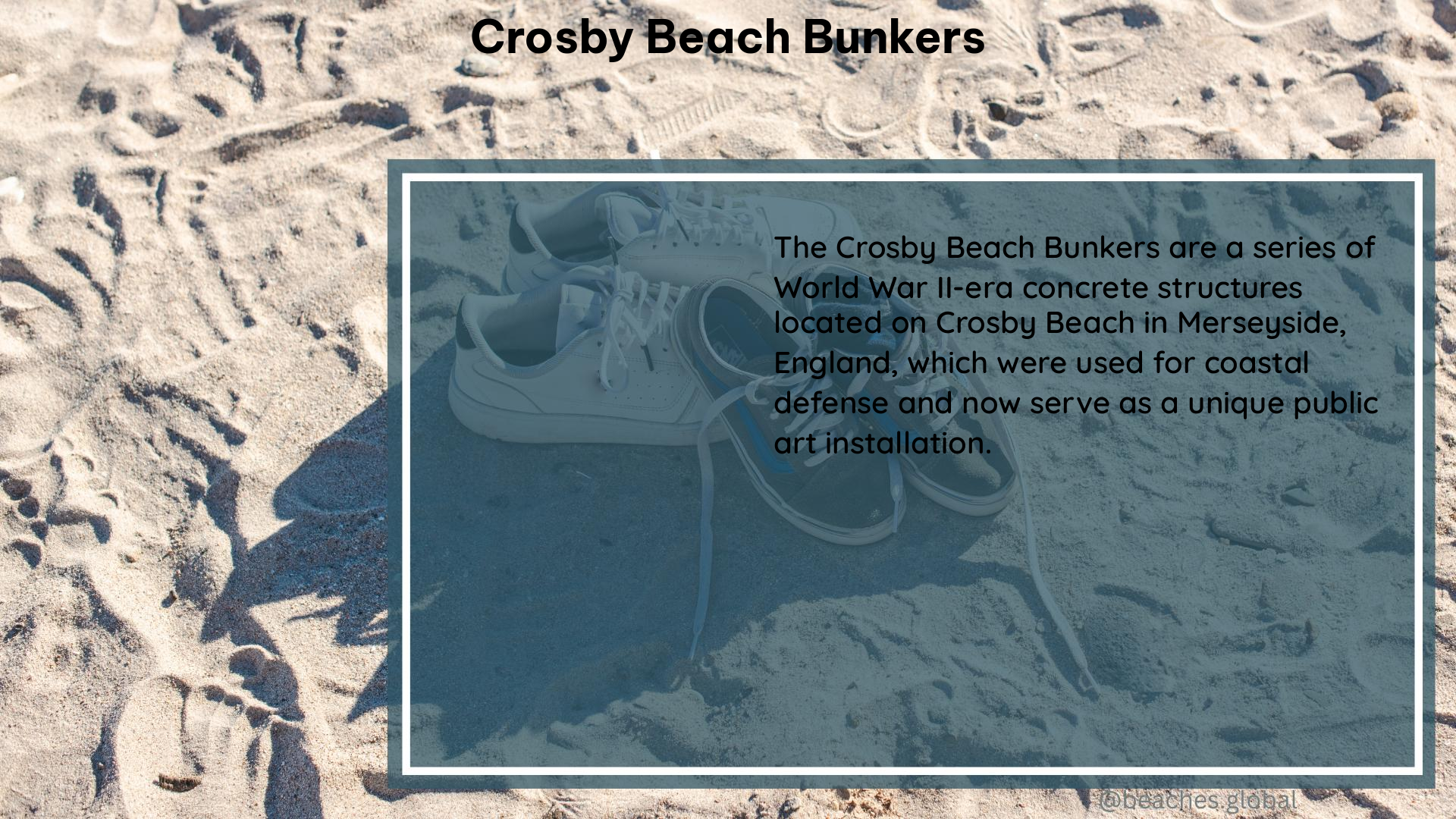Crosby Beach Bunkers are a remarkable historical attraction for beach touring enthusiasts, particularly those interested in military history and World War II archaeology. These bunkers are the remnants of heavy anti-aircraft gun emplacements that were part of Fort Crosby, which was operational during the Second World War. The fort was later demolished, but the bunker remains can still be seen between the coastal footpath and the golf course.
The Liverpool Blitz and the Crosby Beach Bunkers
The Crosby Beach Bunkers are a testament to the Liverpool Blitz, as much of the debris from the raids during the Second World War was brought to this location and has remained for approximately 80 years. The rubble, which includes brickwork from houses in Liverpool, covers a significant portion of the coastline, offering a stark reminder of the extensive damage inflicted on the city during the war.
Exploring the Crosby Beach Bunkers

Visitors to Crosby Beach can witness firsthand the impact of the Blitz and the subsequent efforts to manage the debris. The beach is approximately five miles from Liverpool’s city center and serves as a unique, open-air archaeological site. While there are no official signs or recognition of the site’s historical significance, archaeology students and history enthusiasts have been documenting and studying the area, shedding light on the pre-war history of Liverpool.
Precautions and Safety Considerations
For those interested in visiting Crosby Beach Bunkers, it is essential to exercise caution due to the presence of asbestos-laced building materials from the early 20th century. Visitors are advised to wear protective gear and avoid disturbing any materials to ensure their safety and the preservation of the site.
The Historical Significance of Crosby Beach Bunkers
The Crosby Beach Bunkers offer a unique opportunity for beach touring enthusiasts to explore a significant piece of World War II history. The site’s historical value lies in its connection to the Liverpool Blitz and the subsequent debris management efforts. By visiting the bunkers, visitors can gain a deeper understanding of the city’s past and the impact of the war on its landscape.
Unique Features of Crosby Beach Bunkers
One of the unique features of the Crosby Beach Bunkers is the presence of the rubble from the Liverpool Blitz. This debris, which includes brickwork from houses and other buildings, covers a significant portion of the coastline, providing a tangible connection to the city’s wartime history. Additionally, the bunkers themselves are a testament to the military infrastructure that was in place during the war, offering a glimpse into the defensive measures taken to protect the city.
Exploring the Pre-War History of Liverpool
While the Crosby Beach Bunkers are primarily associated with the Liverpool Blitz, the site also offers insights into the pre-war history of the city. Archaeology students and history enthusiasts have been studying the area, uncovering information about the land use and development in the region prior to the war.
Visiting Crosby Beach Bunkers
For beach touring enthusiasts interested in visiting the Crosby Beach Bunkers, it is important to note that the site is not officially recognized or maintained. There are no signs or markers to guide visitors, and the area can be difficult to navigate due to the presence of debris and uneven terrain. However, the site is open to the public, and visitors are welcome to explore the bunkers and the surrounding area at their own risk.
Conclusion
In conclusion, the Crosby Beach Bunkers are a captivating and historically significant attraction for beach touring enthusiasts. These remnants of Fort Crosby’s anti-aircraft gun emplacements offer a unique window into Liverpool’s wartime history, as well as insights into the city’s pre-war development. While visiting the site requires caution and care, the opportunity to explore this open-air archaeological site is a truly rewarding experience for those interested in military history and the impact of World War II on the local landscape.
References:
– Crosby Beach Bunkers: A Forgotten Relic of Liverpool’s WWII History
– The Forgotten Archaeology of Liverpool’s Blitz-Ravaged Beach
– Exploring the Crosby Beach Bunkers: A Glimpse into Liverpool’s WWII Past
– The Remains of Fort Crosby at Burbo Bank, Crosby
– Fort Crosby: A Forgotten Relic of Liverpool’s Wartime History
